Koolhaas (1998) introduced the concept of a “generic city” as that which is defined by the need for practicality as opposed to nostalgia. This paper demonstrates that Dubai is an example of such a generic city. Four key concepts associated with Koolhaas (1998) support this assertion: development centered around airports, architecture, identity and the history of a place.
Identity
Koolhaas (1998) says that many modern cities are grappling with the problem of creating a unique identity that would be appealing to both local and international investors. A unique feature of his work is the criticism of the concept of identity because he believes it chokes cities of their life and vibrancy (Larice & Macdonald, 2013). His view hinges on arguments that present the concept of identity is a limiting one because it prevents these growing metropolitan areas from expanding. Based on these limitations, Koolhaas (1998) argues that generic cities should be liberated from such identity frameworks.
As visible through the work of Ismaïl and Han (2016), Dubai offers no affiliation to a mainstream identity or context. Not so many years ago, nomads roamed the emirate in search of water and food. Today, the emirate is home to millions of people from around the world who are looking for a better life for themselves and their families (Ghazanchyan, 2017). According to Spooner (2015), Dubai does not limit itself to a unique identity because it is an example of how modern cities could reinvent themselves.
Indeed, it is not like Paris or New York, which are constrained by their historical roots. Instead, some of the world’s most magnificent structures and developments such as the man-made Islands were all conceptualized and implemented in Dubai (Ghazanchyan, 2017). Figure 1 below shows how such a modern vision has transformed the Dubai skyline.
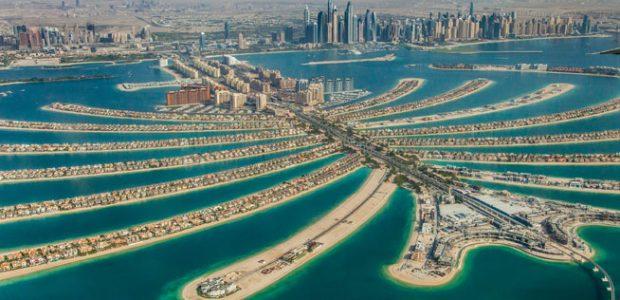
Based on Dubai’s transformation journey, it bears no historical claims, as older cities do. Consequently, it holds limitless potential in the conception of architectural designs. These attributes explain why Dubai offers no resistance to the concept of generic identity proposed by Koolhaas (1998). Indeed, it has no obligations to identity or context.
Developments Centered on Airports
Koolhaas (1998) argued that most generic cities formulate their development agendas around the growth of airports. Dubai has several airports, including the Dubai International Airport, and Al Maktoum Airport. Most developments in the emirate tend to concentrate around these transport hubs. For example, there are many new developments targeting the growth of Al Maktoum Airport. Emaar is one such developer that is building 15,000 homes near the facility. The project will provide residents of Dubai with housing options such as villas, townhouses, and apartments (Saadi, 2016). Figure 2 below shows the proposed plan.
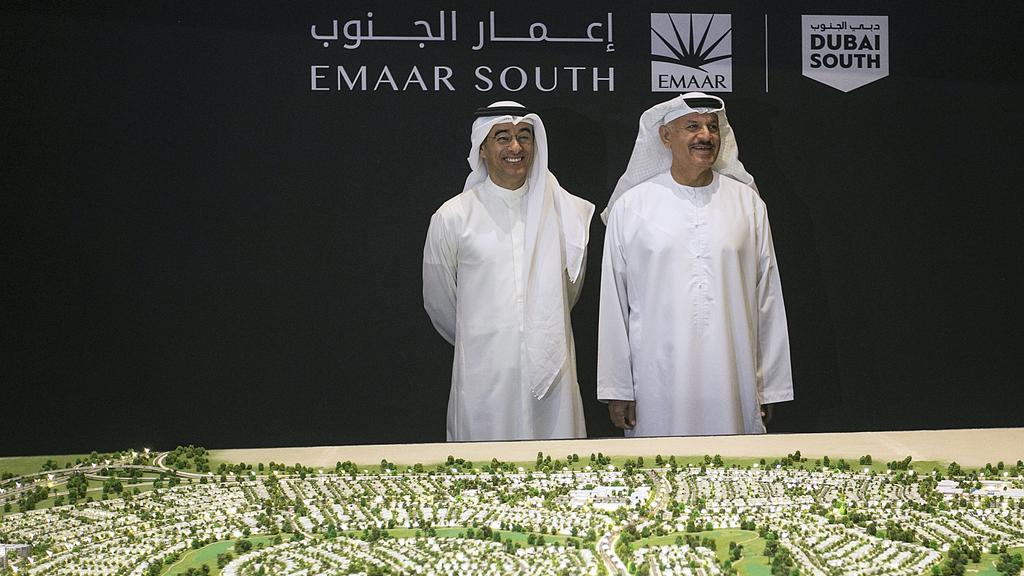
The Green Community is another development built around Al Maktoum airport. It covers 67 hectares of land, which was set aside for residential and commercial use. The development is located only 20 minutes away from the airport (Dubai World Central, 2017). The Arabian Ranches Motor City Sport is another development in Dubai, which is located close to an airport. It has an Autodrome and a cricket stadium, which is mostly frequented by expatriates who are living and working in the city (Dubai World Central, 2017).
This development is only 15 minutes away from the airport. Additionally, the Dubai Investment Park is located 15 minutes away from the airport. The facility is mixed-use because it harbors industrial, commercial and residential establishments spread across a sprawling 2,300 hectares (Dubai World Central, 2017). Jebel Ali Port and Free Zone were also built close to the airport. It is one of the world’s biggest man-made harbors and is home to nearly 6,000 corporations (Dubai World Central, 2017).
Other major developments in Dubai that are located close to the airport include Downtown Dubai, Al Quoz, Dubai Marina, and Palm Jumeirah. Generally, not less than a dozen hotels and mixed-use facilities surround airports around Dubai because most developers try to target business and leisure travelers. The pattern of these developments fulfills a criterion by Koolhaas (1998) that generic cities are closely linked to the growth and development of airports.
History as the Major Preoccupation of the Generic City
As highlighted in this paper, many global cities, such as Paris and London, have a rich history. The same is true for Arab cities. Although Dubai is an Emirate in the UAE and is located within the Arab peninsula, it does not have strong affiliations to its Arabic heritage. In this regard, it is separated from its cultural and social identity. Most of the architecture adopted in Dubai is replicated around the world and not necessarily representative of the city (Larice & Macdonald, 2013).
For example, most of the country’s skyscrapers are pillars of modern architecture that would be found in any major city, such as Copenhagen, London or even Manhattan. The Burj Khalifa building is one such structure highlighted in figure 3 below.
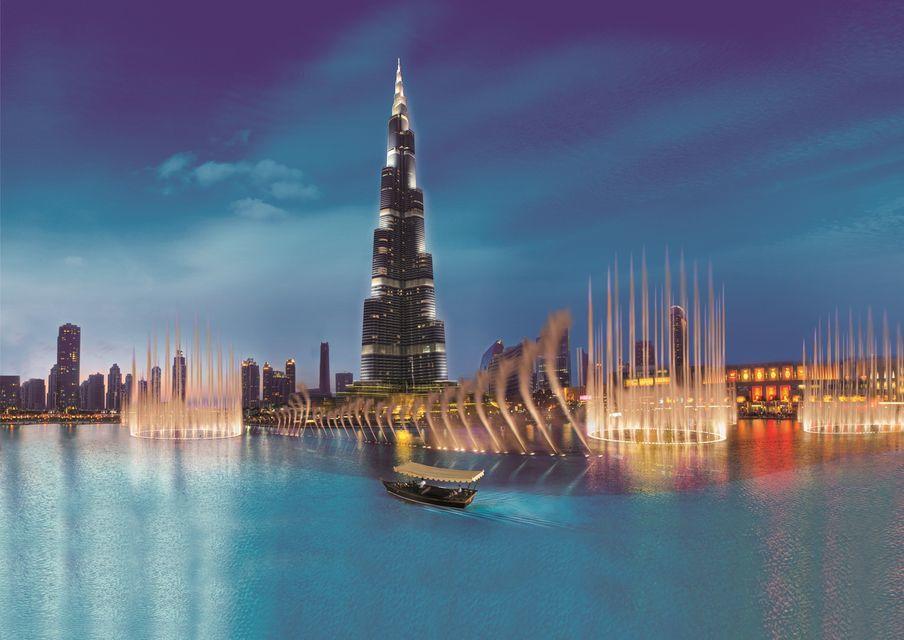
Burj Khalifa was designed to demonstrate the extent that architecture could be integrated with the concept of sustainable living. This approach to development has also been implemented with other megastructures in the emirate. Masdar city is an example, which demonstrates Dubai’s willingness to stretch the limits of its architectural landscape because the metropolis is designed to be 100% sustainable (GYG, 2017).
Therefore, historical considerations relating to Dubai, the UAE and the wider Persian Gulf region have been pushed to the periphery to make room for practical considerations in city design and development. This approach to sustainable living accentuates the hallmark of pragmatism, as depicted by Koolhaas (1998). In other words, this principle proposes that generic cities will attach more value to the practicality of city development at the expense of all other factors, including historical affiliations and cultural considerations.
This analysis demonstrates that Dubai has resisted nostalgic inclinations because it is ruthlessly based on practicality. Relative to this discussion, it is no wonder that most aspects of Dubai’s urban planning are up-to-date and centered on the concept of sustainable development, which is the future of the city’s growth.
Architecture of the Generic City
Architecture is another concept explained by Koolhaas (1998) to be a critical component of generic city development. This concept has different aspects. However, Koolhaas (1998) said that the architecture of most generic buildings is modeled around the practical needs of a building. This view led him to believe that generic cities would have mixed-use development plans (Koolhaas, 1998). This description is true for Dubai because most of its buildings are mixed-use developments (Deewan Architects & Engineers, 2017). For example, the Dubai Mixed-use Towers are illustrations of the kind of developments going on in the city because the buildings house different kinds of businesses and operations.
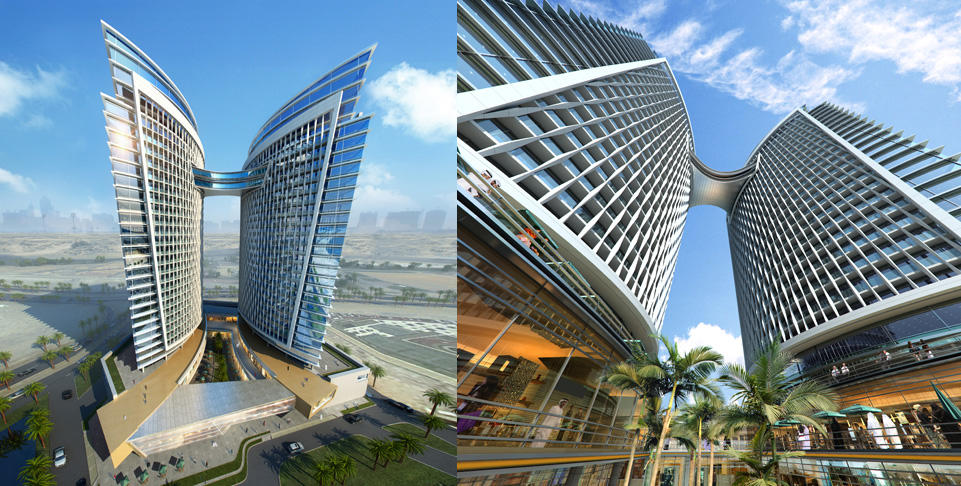
These towers accommodate both a 52-storey hotel and a residential building that is more than 60 storeys high (Deewan Architects & Engineers, 2017). True to the concept of mixed-use developments, most of Dubai’s new buildings try to accommodate as many types of establishments as possible. Commonly, they accommodate luxury residential apartments, hotels, restaurants, offices, retail shops, entertainment spots and other facilities in one building.
The Dubai mixed-use towers are not the only ones that fit this profile in the city. Others that share the same characteristic include the Dubai Marina, Nakheel Towers, Business Bay, Jumeirah Garden City, Culture village, Jumeirah Village, Jebel Ali Village, Al Maktoum International Airport, Dubai Creek Harbor, and Dubai the Sustainable City (Larice & Macdonald, 2013). Some of these projects are complete, while others are expected to be in operation in the coming years.
However, of importance to this study is how their designers modeled them around the mixed-use development framework. Many new architectural developments in Dubai are following the same pattern of development, thereby fitting the view of Koolhaas (1998) which presupposes that most generic cities have mixed-use development.
Generic City
The concept of a generic city seems far-fetched because it is not easy to conceive urban development in the same manner as a pharmaceutical company would produce generic drugs or any other similar type of product. However, Dubai is a generic city in the sense that it has not grown organically as other cities have done. Instead, it was designed to meet the future needs of its population in the same manner as an architect would design a building to meet or fulfill a client’s needs. Figure 5 below shows how it was conceived on paper.
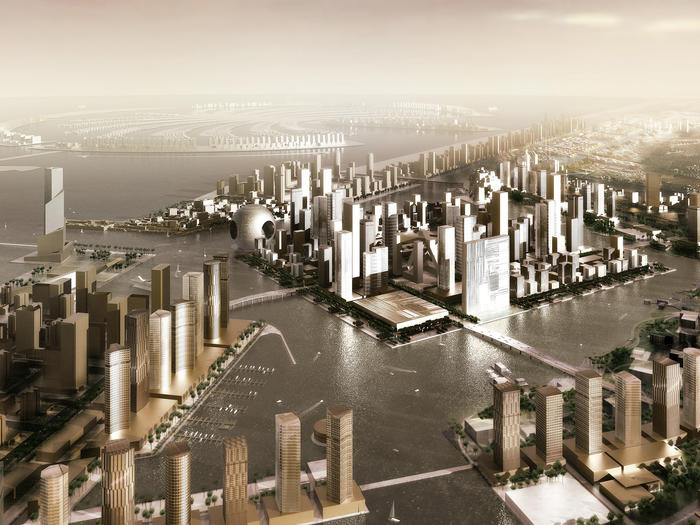
Based on the image above, the modern-day Dubai is a product of a vision by the ruling family of the UAE to build a modern metropolis that would meet the needs of future generations. Concisely, Dubai is a culmination of a dream by its rulers to develop a city from scratch, in the same way as Henry Ford and Walt Disney built an idyllic American suburb and a shopping destination in America. The driving principle behind Dubai’s growth is capitalism, which has helped the government to convince investors around the world that they are tapping into a vision that is beneficial to themselves and that will probably outlive them.
This concept has also helped the rulers of Dubai to “sell” to the world a concept unburdened by the weight of history and culture. Relative to this assertion, different researchers have pointed out that the city has truly grown, not as a response to contemporary needs, but as a preemption of future global needs (Larice & Macdonald, 2013). This design is ideal for a corporation that is after maximizing its potential for growth and profitability. Based on this assertion, it is difficult to think of Dubai as a state or a metropolis; instead, it is best to think of it as a generic corporation, which is generic in nature.
Summary
This paper has demonstrated that Dubai is a generic city because it fits five key criteria for such types of cities as proposed by Koolhaas (1998). Notably, the city does not have a unique identity, which stems from its Arabian roots or its nomadic heritage. It has adopted a more pragmatic approach to development that transcends all historical and cultural limitations to provide a haven of growth for both local and international residents. Its generic nature is more supported by the fact that Dubai has not grown organically; instead, it has been designed artificially to meet the needs of future metropolitan areas.
References
Deewan Architects & Engineers. (2017). Dubai tower complex. Web.
Dubai World Central. (2017). Al Maktoum international. Web.
Ghazanchyan, S. (2017). Armenia to open consulate general in Dubai. Web.
GYG. (2017). Dubai: Fountain show and lake ride by traditional boat. Web.
Ismaïl, A., & Han, J. (2016). Dubai, city of generic artifice. Web.
Koolhaas, R. (1998). The generic city (2nd ed.). New York, NY: The Monacelli Press.
Larice, M., & Macdonald, E. (2013). The urban design reader (2nd ed.). London, UK: Routledge.
OMA. (2017). Waterfront city. Web.
Saadi, D. (2016). Emaar partners with Dubai South for new development near Al Maktoum airport. Web.
Spooner, B. (2015). Globalization: The crucial phase. Philadelphia, PA: University of Pennsylvania Press.